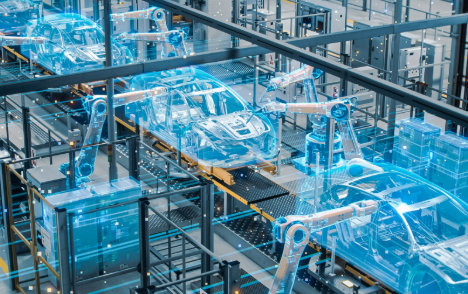The Impact of Digital Twins on Manufacturing
The integration of digital twins in manufacturing represents a pivotal shift in operational methodologies. By simulating real-world processes, these technologies provide insights that enhance efficiency and reduce risks. Companies can anticipate failures and optimize maintenance schedules, fostering a culture of continuous improvement. However, the full scope of their impact remains to be explored further, particularly as advancements in technology continue to evolve. What implications might these developments hold for the future of the industry?
Understanding Digital Twins and Their Functionality
Digital twins represent a transformative concept in manufacturing, embodying a virtual replica of physical assets or processes.
Utilizing advanced virtual modeling techniques, these digital counterparts facilitate comprehensive analysis and optimization. Data synchronization between the physical and virtual realms ensures real-time updates, enabling manufacturers to monitor performance, predict failures, and improve operational efficiency.
This integration fosters innovation while promoting freedom in decision-making processes.
Read more: How Smart Grids Are Revolutionizing the Energy Industry
Benefits of Implementing Digital Twins in Manufacturing
The implementation of digital twins in manufacturing offers a multitude of advantages that can significantly enhance operational outcomes.
Key benefits include substantial cost reduction through optimized resource allocation and improved efficiency.
Furthermore, digital twins facilitate predictive maintenance, allowing manufacturers to anticipate equipment failures and reduce downtime.
This proactive approach not only streamlines operations but also fosters a culture of continuous improvement and innovation within the industry.
Real-World Applications of Digital Twins in Industry
In recent years, the adoption of digital twin technology has revolutionized various sectors within the manufacturing industry.
Companies leverage digital twins for supply chain optimization, enabling real-time monitoring and enhanced decision-making.
Additionally, predictive maintenance practices are implemented, reducing downtime and improving equipment longevity.
These applications illustrate the transformative potential of digital twins, fostering increased efficiency and adaptability in an ever-evolving industrial landscape.
Future Trends and Innovations in Digital Twin Technology
As industries continue to embrace advanced technologies, the evolution of digital twin technology is anticipated to yield significant innovations.
Future trends may focus on enhanced predictive analytics, allowing companies to anticipate issues before they arise.
Additionally, the integration of virtual simulations will enable more comprehensive testing and optimization of processes, ultimately fostering greater efficiency and adaptability in manufacturing environments, thereby promoting freedom in operational decision-making.
Conclusion
In summary, the advent of digital twin technology in manufacturing is akin to having a seasoned navigator aboard a ship, guiding it through turbulent waters. This technology not only enhances operational efficiency but also fosters resilience against unforeseen challenges. As industries continue to embrace these virtual replicas, the potential for innovation and optimization expands, propelling manufacturers toward a future where data-driven insights are paramount. Ultimately, digital twins are transforming the landscape, charting a course for sustained success in a competitive arena.






